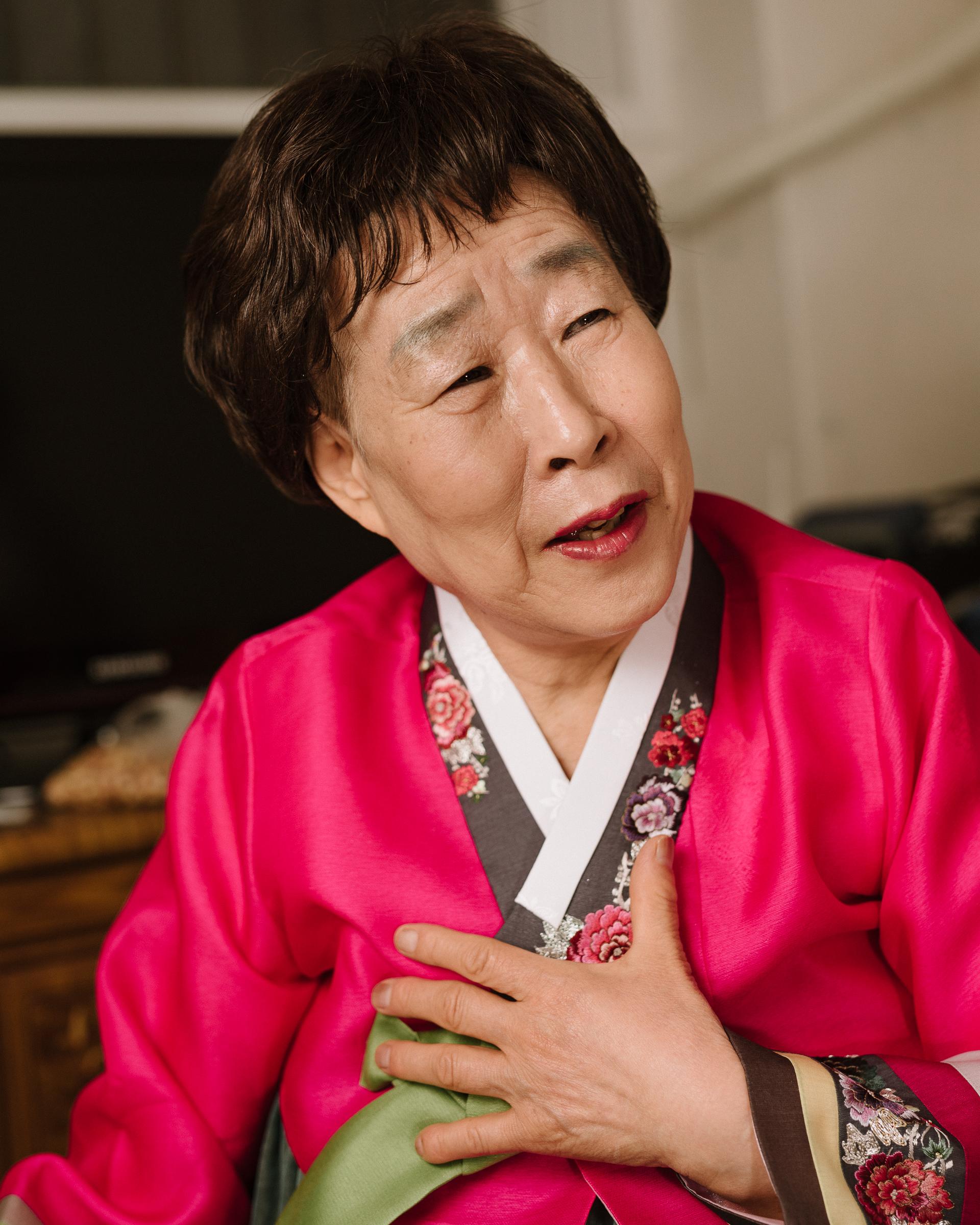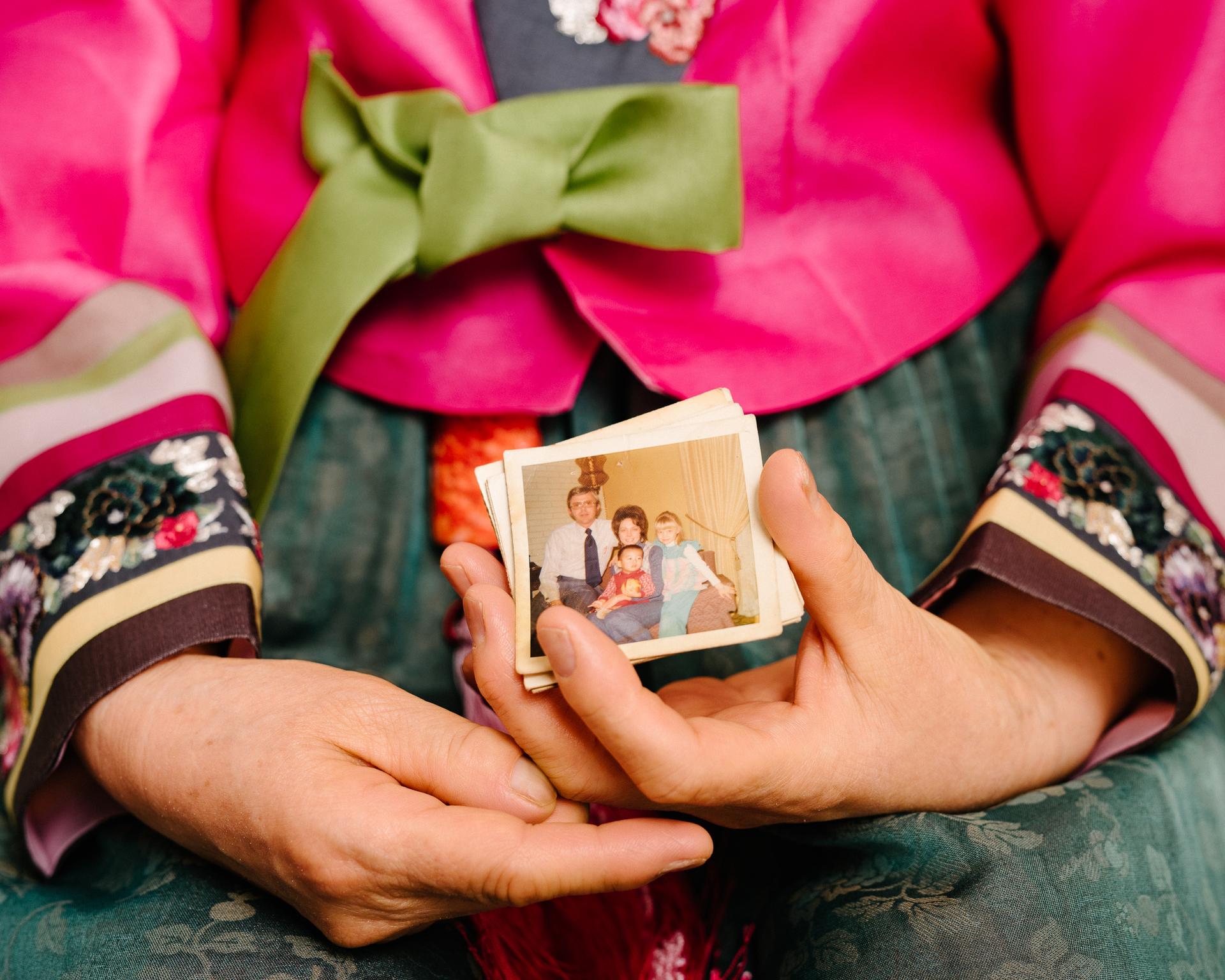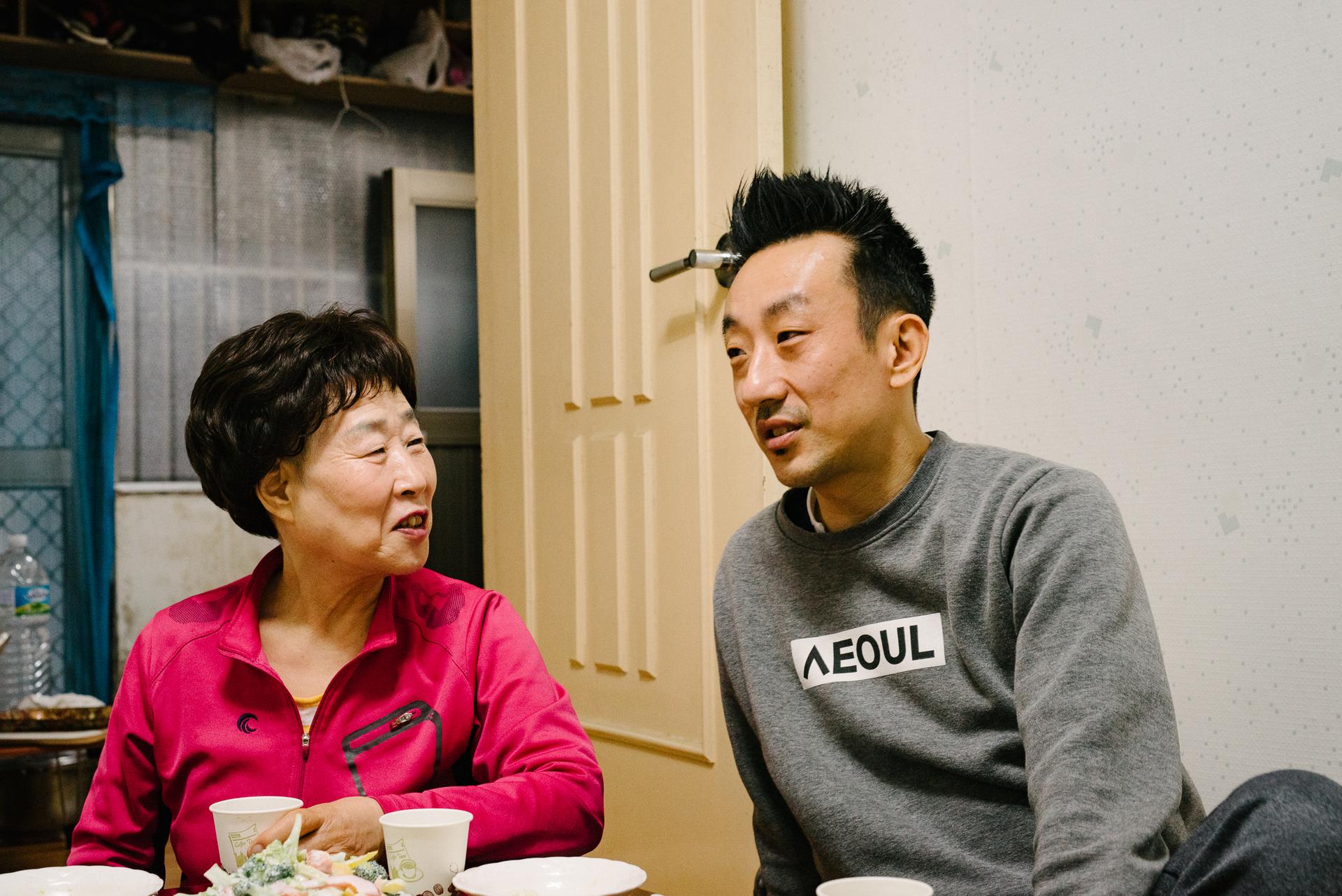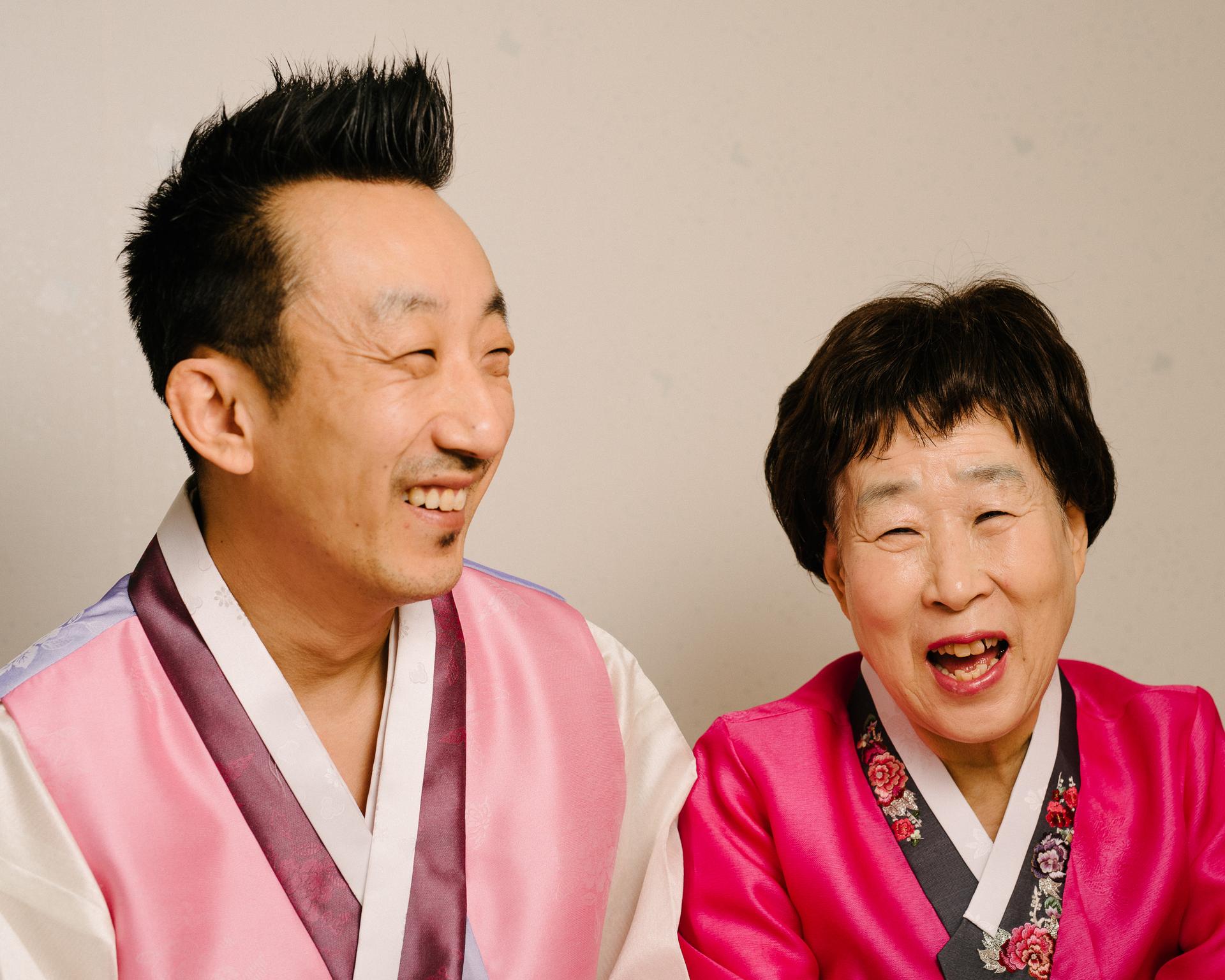Layne Fostervold and his mother, Kim Sook- nyeon, are pictured here. Fostervold was adopted by an American family when he was about 2 years old. His birth mother never stopped wondering what happened to him.
Kim Sook-nyeon, 69, lives in a cozy apartment in Seoul with her son. His name is Layne Fostervold. And he’s an American who grew up in Willmar, Minnesota.
Fostervold was adopted when he was about 2 years old and says he had a good childhood. But he couldn’t shake the questions he had about his biological mother back in South Korea.
“I always felt my mom tried to keep me for a while or was trying to make it work,” he says. “And then for whatever reason [it didn’t work], but I felt like for my entire life she really wanted to keep me.”
Fostervold says his parents in Minnesota supported their only son’s decision to look for his birth mother. But he says he would have looked regardless.
When international adoptions from South Korea began in the 1950s, the process was not designed for reunions. Especially in the earliest waves, adoptive families in the West were instructed to assimilate their children into their new countries and cultures. Restrictive privacy laws and protocols did not encourage adoptees and their biological families to search. But as adoptees have reached adulthood and even middle-age, more are looking for information, not only for themselves but for their own children.
Seven months ago, Fostervold met his Korean mother or eomma face-to-face in Korea for the first time since she gave him up for adoption. And they started the slow process of piecing facts, and emotions, together.
In 1971, Kim Sook-nyeon got pregnant but she wasn’t married. And her family would have faced enormous stigma and prejudice if she had kept the baby.

It’s still uncomfortable for her to talk about it now.
“I was only around 23 years old. I was really too young to know about life, and I had this baby. I felt really sad and worried about him. But I was overwhelmed by all the pressures, and I couldn’t even handle my own life,” Kim says.
Once she made the decision to give her son up, it was final: Kim says she had to promise not to search for her son later on. But it didn’t stop her curiosity and longing to know how he was doing.
“Even after I got married and had a family, I still worried about him. I wanted him to have a good life, and I prayed for him. And I wanted to see him, somehow,” she says.
Kim Soon-yung says whenever there was a TV show featuring Korean adoptees, she would scan the faces looking for her son.
Whenever a TV show came on with adoptees searching for their families, she says she would scan the screen looking for her son. Once, she even called a Korean TV reporter in New York in a desperate attempt to find him. But she didn’t know what his adoptive name was or to which state he had gone. Meanwhile, Fostervold was oblivious to her attempts to locate him. And he always assumed finding her would be impossible.
Many Korean adoptees embark on a search with the help of their adoption agencies or the government. According to Representative Lee Jong-kul, a politician with the New Politics Alliance for Democracy party, between 2012 and 2015, 4,790 adoptees requested searches but only 14.7 percent were successfully reunited. The number of requests has steadily increased since Korean officials started tracking the data in 2012. Yet stories of adoptees who have searched in vain for decades are common in adoptee circles.
Despite these odds, Fostervold decided it was time to look into his past. He flew to Korea in 2012 and visited the agency that handled his adoption, Korea Social Service or KSS. A social worker there showed him his file.
“There was really only a few pieces of paper in there, and then first page was just nothing. Then the second page, she came to a couple of lines written in Hangul [Korean] … and she kind of paused,” he recalls. “Then she said, in 1991 and 1998 someone who claims to be your mother looked for you.”
Fostervold was stunned.
“I was really upset,” he says, sitting inches away from his birth mother. “Then I asked [the social worker] why no one told my adoptive family because they have lived in the same house with the same phone number for 47 years, so they [KSS] could have easily written a letter or called.”
Especially stinging, he said, was to learn his mother had first contacted KSS looking for him more than 25 years ago. KSS declined requests for an interview. But Fostervold says the agency told him he wasn’t notified because of their protocol. He hadn’t signed a letter of consent for contact.
“For me, it was like, well how I’m supposed to know it? My adoptive family didn’t even know it.”
After he reunited with his eomma, he discovered yellowed photos of him and his adoptive family that she had kept all these years. That’s when he realized the agency had known all along how to get in touch with his eomma. But neither he nor his parents were ever informed.
“Otherwise, there’s no way she has these pictures,” he says.
Fosterwold's mother kept photos of him with his adoptive family in Minnesota for decades.
The Korean government estimates that more than 160,000 children have been adopted from Korea since the 1950s. Experts who study Korean adoption say the government was lax in overseeing agencies that may have cut corners to speed adoptions. Some have been accused of pressuring young women to give up their children.

Korea’s adoption law in 2012 ushered in tighter restrictions. But the country’s privacy laws still challenge adoptees who seek out their past. And once reunited with their biological parents, adoptees often struggle to fill in the blanks.
Last year, Fostervold moved to Korea and now lives with his eomma. Even though there’s a huge language gap, they are working it out. They’re often home together, all day. She has stage four breast cancer and is going through treatment. He’s trying to learn Korean to get a professional job.
“She basically just speaks to me in Korean, so it’s whatever I can pick up. She’s really good with hand gestures and things like that. The little bit I know is just the basics, like 'tired,' 'hungry,' 'full.' So it’s been good as far as us being together.”
But there are trade-offs to moving in with your mother at age 45.
“She wants to know where I’m going when I go out. Basically, I can say chingu [which means 'friend'] and then she’ll ask if it’s a female. She’ll be like, ‘Yeoja?’ and then I’ll say [about my date], 'It’s like a meal, we’re going to go eat,' and I’ll say, 'Shiksa.' I think most of the times she understands, but sometimes she doesn’t.”
Fostervold plans to stay in Korea for now. And that suits his eomma just fine. She’s a widow, and her daughter has a family of her own. Fostervold says his sister grew up knowing about him and is glad to be in contact now. Their eomma is, too.
“It was so good to have him here after my surgery,” Kim says. “I was so lonely and in pain and he was very supportive.”
Kim Sook-nyeon and her son Layne Fostervold spend a lot of time together at home in Seoul. The way she takes care of me, he says, I can tell that she's my mother.

So far, the arrangement has lasted two months. Fostervold says the feelings weren’t automatic. But eventually, the bonds developed.
“After her surgeries, I spent a couple of nights in the hospital with her. And then after I moved in, probably [was] around the time where I started to feel like she’s really my mother — the way she tries to take care of me and tries to do all the little things. I can tell that she’s my mother by some of those things,” he says.
Fostervold, who recently changed his surname to Kim on social media, encourages other adoptees to come to Korea and look at their files if they’re ready. He says you never know what you might find.
An earlier version of this story misspelled Sook-nyeon and Fostervold.
